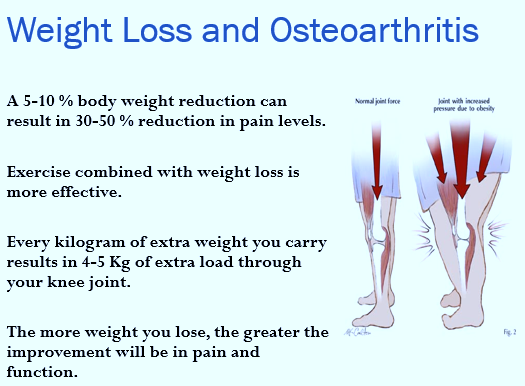
Arthritis is a chronic condition that affects millions of people worldwide, causing pain, inflammation, and stiffness in the joints. One often-overlooked factor in managing arthritis symptoms is maintaining a healthy weight. Weight management for arthritis is crucial, as excess weight places additional pressure on the joints, exacerbating pain and stiffness. In this post, we’ll discuss how maintaining a healthy weight can benefit those with arthritis and offer safe, practical tips for weight loss to ease arthritis pain.
Why Weight Management Matters for Arthritis
Each pound of body weight adds extra strain to weight-bearing joints, such as the knees, hips, and lower back. Research shows that even modest weight loss can significantly reduce pain and improve mobility for people with arthritis, particularly those with osteoarthritis. Here’s how weight management can impact arthritis:
- Reduces Joint Pressure: For every pound of weight lost, there’s a reduction of about four pounds of pressure on the knees. This means even losing 10 pounds can relieve 40 pounds of pressure on the knee joints.
- Decreases Inflammation: Fat cells produce inflammatory substances that can worsen arthritis symptoms. Reducing body fat can help decrease inflammation in the body, potentially reducing arthritis pain and slowing down joint damage.
- Improves Mobility and Quality of Life: Losing weight can improve joint function and mobility, enabling people with arthritis to stay active and enjoy a better quality of life.
Safe and Effective Tips to Lose Weight with Arthritis
Weight loss with arthritis can be challenging due to pain and limited mobility. However, there are safe ways to shed excess pounds without putting undue stress on the joints. Here are some effective tips to help manage weight while living with arthritis:
1. Embrace a Balanced, Anti-Inflammatory Diet
A balanced diet that emphasizes anti-inflammatory foods can support weight loss and reduce arthritis symptoms.
- Focus on Whole Foods: Fill your plate with whole grains, lean proteins, and plenty of fruits and vegetables, especially leafy greens, berries, and other anti-inflammatory foods.
- Include Healthy Fats: Omega-3 fatty acids, found in foods like salmon, chia seeds, and walnuts, have anti-inflammatory properties that may help reduce joint pain.
- Limit Processed Foods: Avoid sugary snacks, fried foods, and highly processed items, as these can promote inflammation and contribute to weight gain.
2. Engage in Low-Impact Exercises
Exercise is essential for weight management, but for those with arthritis, it’s important to choose joint-friendly activities that minimize strain.
- Swimming and Aquatic Exercises: Water’s buoyancy reduces joint impact while providing resistance, making swimming an excellent exercise for arthritis sufferers.
- Cycling: Stationary biking or cycling at a moderate pace is a great way to boost cardiovascular health and burn calories without stressing the joints.
- Yoga and Stretching: Gentle stretching and yoga can improve flexibility, reduce stiffness, and build muscle strength to support the joints.
- Walking: Walking is simple and low-impact. Start with short walks, gradually increasing your distance as your endurance improves.
3. Practice Portion Control
Controlling portion sizes is a powerful way to manage calorie intake without restrictive dieting. Here are some simple portion control techniques:
- Use Smaller Plates: This can help you serve smaller portions while still feeling satisfied.
- Listen to Your Body: Eat slowly and stop when you feel full to avoid overeating.
- Measure Serving Sizes: Being mindful of portion sizes can help prevent overeating, especially when it comes to high-calorie foods.
4. Strength Training for Joint Support
Building muscle strength around the joints can help provide support and reduce joint pain. However, it’s crucial to use proper form to avoid injury.
- Focus on Bodyweight Exercises: Gentle exercises, like squats (without weights), leg lifts, and wall push-ups, can help strengthen muscles around the joints.
- Consider Resistance Bands: Resistance bands provide gentle resistance that can build strength without overloading the joints.
- Work with a Trainer: A physical therapist or personal trainer familiar with arthritis can help create a safe, customized exercise plan.
5. Stay Consistent and Patient
Weight management with arthritis requires consistency and patience. Set realistic goals and celebrate small milestones, such as reducing joint pain, feeling more energetic, or increasing your physical activity level. Remember that even modest weight loss can have significant benefits for your arthritis symptoms.
6. Prioritize Sleep and Stress Reduction
Sleep and stress management play essential roles in weight management and arthritis pain control.
- Prioritize Restful Sleep: Poor sleep can lead to weight gain and worsen inflammation. Create a calming nighttime routine and aim for 7-9 hours of sleep per night.
- Manage Stress: Chronic stress can increase the body’s inflammatory response. Practicing relaxation techniques, such as meditation, deep breathing exercises, and mindfulness, can help reduce stress.
7. Consider Tracking Your Progress
Keeping a food and activity journal can help you stay accountable and track your progress. Many apps allow you to log meals, water intake, and physical activity, making it easier to identify habits and make adjustments as needed.
Final Thoughts: Weight Management as Part of Arthritis Care
While weight loss alone can’t cure arthritis, it’s an important aspect of managing symptoms and improving joint health. Maintaining a healthy weight can reduce pain, increase mobility, and lower inflammation, making it easier to live well with arthritis.
If you’re unsure where to begin, consider consulting a healthcare provider or a dietitian. They can provide personalized guidance to help you achieve your weight management goals in a way that supports your overall health and arthritis management.

